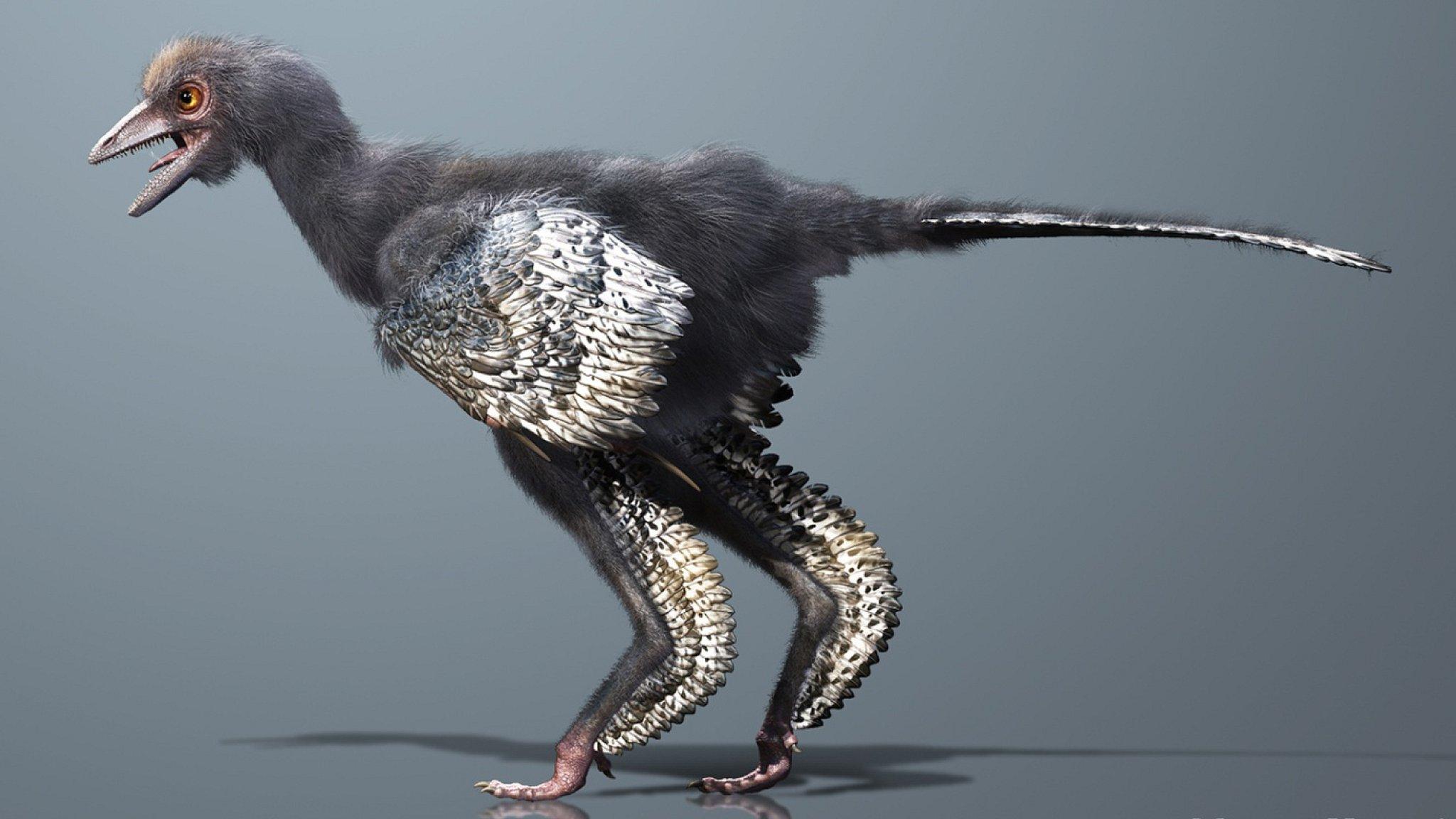Egg shape 'helped birds survive' asteroid impact
- Published

Fossil records of theropod eggs allowed scientists to analyse their geometric properties
The shape of birds' eggs could have helped them survive the mass extinction event that killed off the dinosaurs, new research proposes.
A team analysed the geometric properties of eggs from 250 million years ago (Mesozoic Era) to today.
Before the extinction event about 65 million years ago, eggshells had notable differences to the lineage that survived.
It is these survivors that all modern day birds descend from.
But the authors note that egg shape is but a "small piece of the puzzle" of the evolutionary conundrum of why one lineage of birds made it through the mass extinction event, whereas others did not. Their findings are published in the Royal Society journal Open Science, external.
The analysis found that Mesozoic eggs were elongated and significantly more symmetrical than all other bird eggs. Mesozoic bird eggshells were also more porous than expected for their size.
Lead author of the work, Dr Charles Deeming from Lincoln University in the UK, found that fossil remains of eggs from 65 million years ago onwards were indistinguishable from modern bird eggs. The Mesozoic eggs, however, differed significantly.
"This implies that Mesozoic birds were doing something more akin to theropod-like ancestors than to modern birds," he said.

Microraptor is thought to be an evolutionary link between birds and dinosaurs
Theropod dinosaurs include the largest carnivorous predators which dominated the Earth during the Jurassic and Cretaceous periods.
A branch of these, referred to as avian theropods are on the lineage that gave rise to birds.
Although eggshell shape could be a contributing factor, how exactly one group survived still largely remains a mystery.
"We don't know why this iconic group disappeared and the relatives of modern birds survived," Dr Deeming told BBC News. "We're not claiming in our paper that this tells us the answer."
It could also be down to their behaviour, he explained.
"I suspect modern birds survived the major extinction event because they used contact incubation that's prevalent now; they built nests and sat on their eggs whereas most of the birds prior to that were burying the eggs like their theropod ancestors, potentially making them more vulnerable."

Scientists compared modern eggs to extinct eggs from early birds and feathered dinosaurs
Dr Gareth Dyke at the University of Southampton specialises in the evolution of birds. Commenting on the work, he said it was "perhaps intuitive" that eggshells differed in shape and that it was interesting to show this for the first time.
"We know that in the late Cretaceous there were at least two or three other lineages of flying birds that were anatomically quite similar to the group that went on to radiate and become all of the living [bird] species after the extinction event."
Dr Dyke added that the differences between these groups represented one of the big unanswered questions for palaeontologists.
"It's got to be some biological or ecological reason. If it was more random you would expect that stragglers from some groups in the Cretaceous would have limped across the extinction events, but that didn't happen."

Modern birds like guillemots incubate their eggs
Expanding on this point, Gary Kaiser, a biologist at the Royal British Columbia Museum in Canada, said that egg shapes were certainly important.
"We know that some dinosaurs incubated eggs but we also know from fine structure of the bones that their hatchlings were small and took a long time to reach adult size. A slow or extended reproductive period may have been the type of problem that led to the extinction of the dinosaurs."
Prof Xu Xing from the Chinese Academy of Sciences in Beijing commented: "The authors have done a nice piece of work demonstrating the shape changes among amniote eggs.
"However, I could not find how this study helps to understand the big extinction. Because the authors group birds based on geological time, they effectively eliminate the possibility of finding any pattern for birds surviving the extinction event."
- Published1 August 2013

- Published29 May 2013

- Published20 September 2011

- Published27 July 2011

- Published21 January 2011